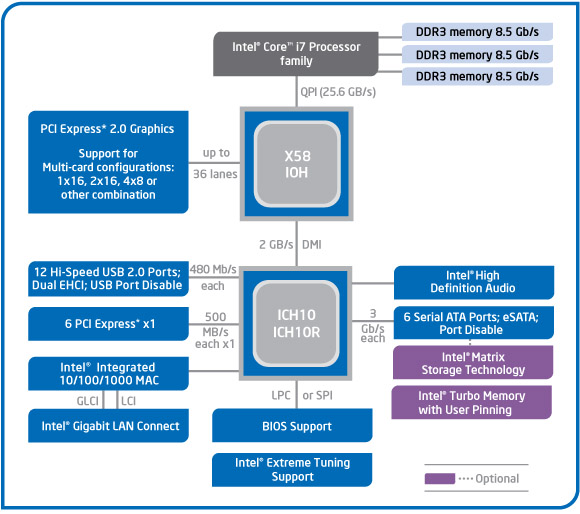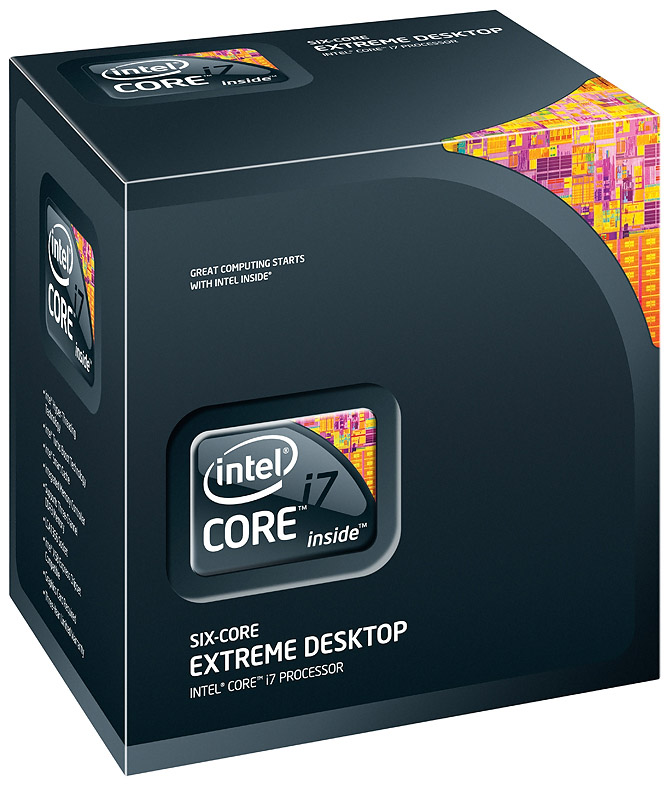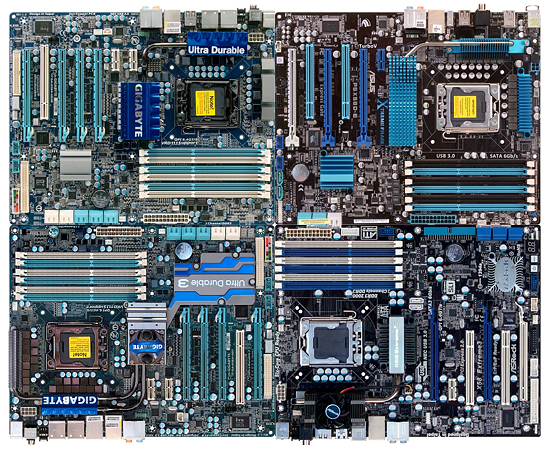X58 In 2010: Four LGA 1366 Boards With USB 3.0 And SATA 6Gb/s
The March 2010 launch of Intel's hexa-core Core i7-980X gave us a good reason to revisit the LGA 1366 interface. Today, we're looking at four new X58 Express-based motherboards that tie USB 3.0 and SATA 6Gb/s support in to Intel's flagship platform.
Being Well-Connected
Many people assume newer is better, but that’s not always true when it comes to processor interfaces. The high-end LGA 1366 platform launched with Intel’s Nehalem architecture in 2008, and the mainstream LGA 1156 platform that followed nearly a year later wasn’t designed to match the connectivity needs of a high-end market.
Yet, by the time new technologies like USB 3.0 and SATA 6Gb/s were available to the public, the market was treating Intel’s high-end platform like a has-been, despite the fact that it continues to offer the PCI Express 2.0 needed for both capabilities.
The problem with LGA 1156 is its lack of PCI Express 2.0 connectivity. Most gamers won't want to sacrifice any of the processor’s sixteen 5.0 Gb/s lanes for an add-in controller, since doing so steals bandwidth from the graphics card. And the PCI Express lanes that come from Intel's P55, H57, and H55 controller hubs only run at the PCIe 1.1 data rate, severely bottlenecking performance.
While some manufacturers initially tried to sneak away the graphics cards lanes, and others used a bridge device to connect four 2.5 Gb/s lanes to two 5.0 Gb/s controllers, true enthusiasts knew that the only “perfect” way to add those high-performance controllers would be to simply use a platform with more true PCI Express 2.0 connectivity.
Fortunately, X58 already has 36 PCIe 2.0 pathways, allowing up to 32 to be devoted to graphics, while four serve other needs. Those other needs can include 5.0 Gb/s USB 3.0 and SATA 6Gb/s (at 5.0 Gb/s max). But X58 needed a new high-end processor to help thrust it back into the spotlight. That product came six weeks ago with the introduction of Intel’s six-core Core i7-980X processor.
Now that people are finally taking second (and third) looks at the X58, let’s see what these new-for-2010 motherboard’s have to offer.
Get Tom's Hardware's best news and in-depth reviews, straight to your inbox.
-
Tindytim First Intel punishes me by not releasing a proper 32nm 920 replacement for the 1366, and then Tom's publishes this article only days after I purchase components for yet another 1366 build.Reply
I must be a BYOPC masochist. -
Stardude82 Nice to see that mobo makers aren't charging too much of a premium for USB 3.0 and SATA-6. On the other hand, what an embarrassing for ASRock just as I thought they were getting out the shadow of ASUS.Reply
I would have liked to see those new ports put to use on these boards... -
omoronovo I very recently decided to take the plunge in an i7-based build, and I chose the UD3R for it. I couldn't be happier - this little monster pushes my i7 to 4ghz stable on stock vcore.Reply
One thing I haven't seen anywhere though, but would like to, is the overclocking variance added through differing ram capacities. Even though I reached 4ghz on stock vcore, I had to push my QPI to 1.35 to keep the system stable with 6 modules installed. With 4 modules, this was reduced to 1.28, and with 3 it was around 1.24 and with only 2 I could run the QPI volts at 1.2.
Perhaps an idea for an in-depth article at some point in the future Toms? -
liquidsnake718 Thank you TS. I think you may have built and benched my new computer. I see you still chose the 920 over the 930. Even before reading this article, I had my eyes on the UD3R because of the price and the decent features, save the sound card. However because of this article, I am going to reserve this mb and start building a newbie!Reply
The next step would be to see how these boards stack up using 6 cores and letting people know what power with 6 cores means using a 1 & a half year old motherboard. Although knowing that 6 cores, USB3.0 and SATA 6.0gb are a long way from being standard, it is by no means premature to have this board as one knows that they will be paying and buying for the long haul! The smartest ones do, and seeing as you guys chose the best parts for the price in terms of quality/performance, the UD3 is a perfect fit for a 5850 or maybe 2!
You should send this article to someone at Intel and maybe they will want to soon follow the way of USB3.0 for their vanilla board! I guess these builds are the new standard for high end or borderline excellent.
-
anders_w An error/typo in the table page 2?Reply
http://www.tomshardware.com/reviews/x58-usb-3.0-sata-6-gbps,2614-2.html
The table claims Asus P6X58D-E have Chipset S-ata 6 x SATA 6.0 Gb/s
Should probably be 6 x SATA 3.0 Gb/s... -
Crashman anders_wAn error/typo in the table page 2?http://www.tomshardware.com/review 614-2.htmlThe table claims Asus P6X58D-E have Chipset S-ata 6 x SATA 6.0 Gb/sShould probably be 6 x SATA 3.0 Gb/s...Reply
Thanks. -
C 64 At first quick look at the picture I almost fell from my chair... a quad processor MB, but then I realized Tom had problems squeezing the MBs in the pic.Reply
-
Crashman zipzoomflyhighAnother X58 reviews. Just what we all wanted. NOT.Yeh, X58 is obviously exceeds your needs but there hasn't been much news on the Via Apollo Pro front.Reply -
abhishekk89 i'd been planning on a p55 chipset + i5 750... now i'm thinking of i7 930 + gigabyte ud3rReply



